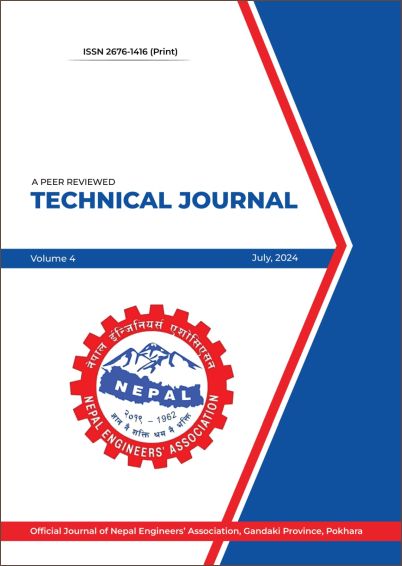Predictive Modelling of Soaked California Bearing Ratio in Nano-Silica Stabilized Sub-grade Soil in Lesser Himalayan Region
DOI:
https://doi.org/10.3126/tj.v4i1.73948Keywords:
California bearing ratio, lesser Himalayan region, machine learing, soil stabilization, sub-gradeAbstract
This research employs predictive modelling techniques to comprehensively understand the soaked CBR, a key parameter indicating the soil's load-bearing capacity under wet conditions. Experimental investigations are conducted on Nano-Silica (NS) treated sub-grade soil samples collected from the Lesser Himalayan Region. These experiments encompass a range of Nano-Silica concentrations and soaking conditions to capture the diverse environmental factors prevalent in the region. Advanced statistical and machine learning tools are applied to analyze the data and develop predictive models. The objective is to establish correlations between Nano-Silica content, soaking conditions, and the resulting soaked CBR. The models are validated against independent datasets to ensure their reliability and generalizability. The findings of this study hold significant implications for sustainable infrastructure development in the Lesser Himalayan Region. A robust predictive model for soaked CBR in Nano-Silica stabilized sub-grade soil not only contributes to the understanding of soil stabilization mechanisms but also aids in optimizing construction practices for enhanced road performance in challenging terrains. This research bridges the gap between traditional geotechnical engineering and emerging nanotechnology applications in soil stabilization, paving the way for resilient and durable infrastructure in geologically complex regions.
Downloads
Downloads
Published
How to Cite
Issue
Section
License
© Technical Journal
Authors are required to transfer their copyright to the journal.




